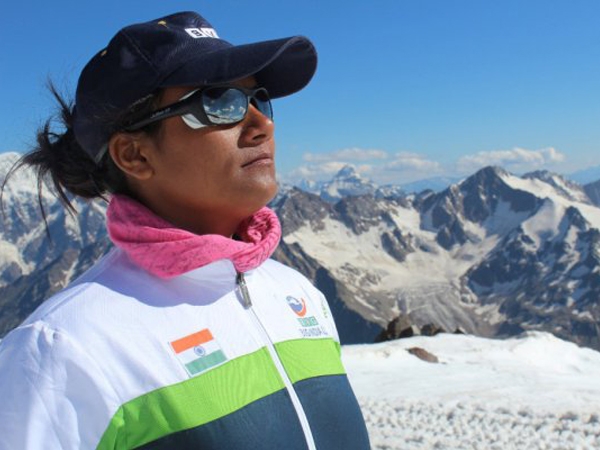
Three years ago, I remember reading this horrific case of the death of an 18-year old girl in Vijaywada. She was pregnant and the father of the child, her fiancé, had refused to marry her and deserted her. Stung by the whole affair, the parents had approached a nurse at a private hospital to abort the child. The nurse performed the procedure without any doctor’s supervision and within a few days, the girl developed a stomach ache that worsened into unbearable agony.
The local government hospital there referred her to a bigger private hospital. It turned out that because of the botched abortion, the girl’s kidneys had become infected and the infection had spread to her lungs and liver. The parents watched in horror as their daughter, breathing torturously, slowly slipped away from them, until she was no more.
A recent story that appeared in the Times Of India a few days ago, once again brings home the horrors of botched abortions. According to the story, at least 34 women died in the past 3 years in Mumbai alone due to botched abortions.
We Indians, live in a world of contradictions. Our government, in a surprisingly far sighted move, legalised abortions way back in 1971 itself! Yet almost every time, abortions stir up this raging turmoil of political and legal controversies. It is possible to simply walk into any hospital, even government hospitals and ask for an abortion. Yet every year, hundreds of women die from botched abortions across the country, which are conducted in spurious back-alley clinics. Why?
The reasons cover a wide gamut of issues, right from a vaguely-worded government act, to social stigma, female foeticide, lack of information, to an insensitive approach at legal abortion centres.
Although India is one of only 14 countries in the world to legalise abortions, the trouble lies in the way the act is worded. The Medical Termination of Pregnancy Act allows abortions under circumstances where the doctor believes ‘in good faith’ that the continuance of the pregnancy would risk the life of the pregnant woman or cause her serious harm, mentally and physically.
With this single phrase, the act completely moves out from the domain of being a liberal act that allows a woman the right to make decisions about her own body. Instead it becomes this burdensome affair, where the onus is upon the woman to prove why she needs an abortion, when she is already going through the emotional trauma of deciding to lose her baby. Add to that is the attitude of medical workers at many legal abortion centres to unmarried patients. So it isn’t surprising that many women opt for the anonymity of back-alley joints.
This was something an acquaintance of mine discovered recently when she had a pregnancy scare. When she approached a women’s hospital in her city to confirm, the first thing the matron asked her was whether she was single or married. On finding out that she was single, a steely look came into the matron’s eyes. “We can do a pregnancy test here if you want, but if you want an abortion, then please don’t come here. Go elsewhere,” she said sternly. “Give your name at admission and leave and we may call you sometime in the next 15 days for a test appointment.”
Completely put off by the whole episode, she quietly got tested at a diagnostic centre. Fortunately for her, she was not pregnant.
It does not help pregnant women that rules and protocol for the procedures have been tightened by the government to curb female foeticide. While female foeticide needs to be dealt with, the sharp questions and multiple forms that need to be filled for the abortion procedure put off women who want anonymity and no questions asked, for fear of social ostracism.
Dr Anita Soni, an Obstetrics & Gynaecology Consultant at Hiranandani Hospital, disagrees. “There are multiple forms to be filled, yes. But this is kept strictly confidential and is between the patient and the doctor only,” she said. “Many women also don’t realise, that if they want to abort, only their consent is required. Not their husband’s. These back-alley procedures are mostly sought in rural areas and by people with poor economic backgrounds. The educated middle and upper middle class just look up procedures online and they figure out which hospitals provide these facilities. In fact, barring a few hospitals, a majority of them have facilities for abortion. It’s a small procedure anyway.”
What is actually required today, added Dr Soni, is an organised information drive. “The issue associated with abortion, whether it be taboo, stigma or fear is all due to lack of awareness,” she said. “We need an information drive that talks about the options available for abortion (even government hospitals do it). Also it needs to assure people that their identities will be protected and that it is a woman’s right to do so without anybody’s consent.”
The issue of lack of awareness needs to be handled on two fronts, information on contraceptives and options for medical termination. According to a study by Ipas, a global non-profit, 76 per cent of women who come for first-time abortions are unmarried. And a majority of the unsafe abortions are those done in the second trimester of pregnancy. Legally, India does not allow second trimester abortions.
Sex education becomes very important here, not only to prevent pregnancies and detect them in time, but also to take care of our bodies.
This article is not a debate on whether abortion is right or wrong. Instead it’s a clarion call to all women out there. In a society where women are told that it is imperative that they fulfill the role of a mother, an abortion is a very painful and emotional decision to arrive upon. But at the end of the day, it is your body. Whatever you choose to do with your situation, it is your body that undergoes the transition. So choose. And choose without fear. The law is with you.
Image Courtesy: © Thinkstock photos/ Getty Images
More on>> Balancing Act




